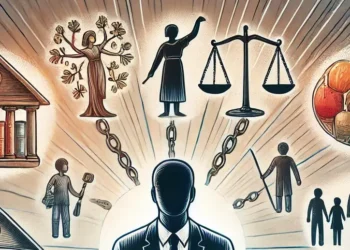Table of Contents
- Definition and Scope of Ageism
- Theoretical Frameworks in Understanding Ageism
- Manifestations and Consequences of Ageism
- Addressing Ageism
- Conclusion
Ageism is a form of discrimination that involves prejudicial attitudes, beliefs, and behaviors directed toward individuals or groups based on their age. It is a pervasive issue in many societies, affecting both the young and the elderly. Sociologically, ageism can be understood through various theoretical frameworks and empirical studies that highlight its causes, manifestations, and consequences. This essay will explore the concept of ageism, examining its definition, theoretical underpinnings, and the impact it has on individuals and society. By analyzing ageism through a sociological lens, we can better understand its complexity and the ways in which it perpetuates social inequalities.
Definition and Scope of Ageism
Ageism, a term coined by gerontologist Robert N. Butler in 1969, refers to the systematic stereotyping and discrimination against people because they are old. However, ageism is not confined to the elderly; it can also affect younger individuals who face discrimination due to their perceived lack of experience or maturity. The scope of ageism is broad, encompassing various domains such as employment, healthcare, media representation, and everyday interactions.
Ageism in Employment
One of the most significant areas where ageism is evident is in the workplace. Older adults often face challenges in securing employment, retaining jobs, and receiving promotions. Employers may harbor stereotypes that older workers are less adaptable, technologically inept, or more prone to health issues, leading to biased hiring practices and workplace policies. Conversely, younger workers might be perceived as inexperienced or unreliable, facing hurdles in gaining respect and career advancement.
Ageism in Healthcare
Ageism in healthcare can have severe implications for the well-being of older adults. Healthcare professionals may hold biased attitudes that influence their treatment decisions, such as under-treating older patients or attributing symptoms to aging rather than addressing underlying medical conditions. This can result in inadequate care, misdiagnosis, and a general lack of attention to the specific health needs of the elderly. Similarly, young individuals may also experience age-related biases, particularly in areas like mental health, where their concerns might be dismissed as typical adolescent behavior.
Media Representation of Age
The media plays a crucial role in shaping societal perceptions of age. Older adults are often underrepresented or depicted in stereotypical roles, such as being frail, dependent, or out of touch with modern life. These portrayals reinforce negative stereotypes and contribute to the marginalization of older individuals. On the other hand, younger people might be depicted as naive, rebellious, or irresponsible, perpetuating stereotypes that can affect their social interactions and opportunities.
Theoretical Frameworks in Understanding Ageism
Understanding ageism requires a multifaceted approach that incorporates various sociological theories. These theories provide insights into the structural, cultural, and interpersonal dynamics that contribute to age-based discrimination.
Structural Functionalism
From a structural functionalist perspective, society is viewed as a complex system with interdependent parts that work together to promote stability and order. Age roles and norms are seen as functional, helping to maintain social order by allocating appropriate roles to individuals based on their age. For instance, retirement is viewed as a mechanism that allows younger individuals to enter the workforce while providing older adults with rest and leisure. However, this perspective can also perpetuate ageism by reinforcing rigid age-related expectations and limiting opportunities for older adults to remain active and productive members of society.








